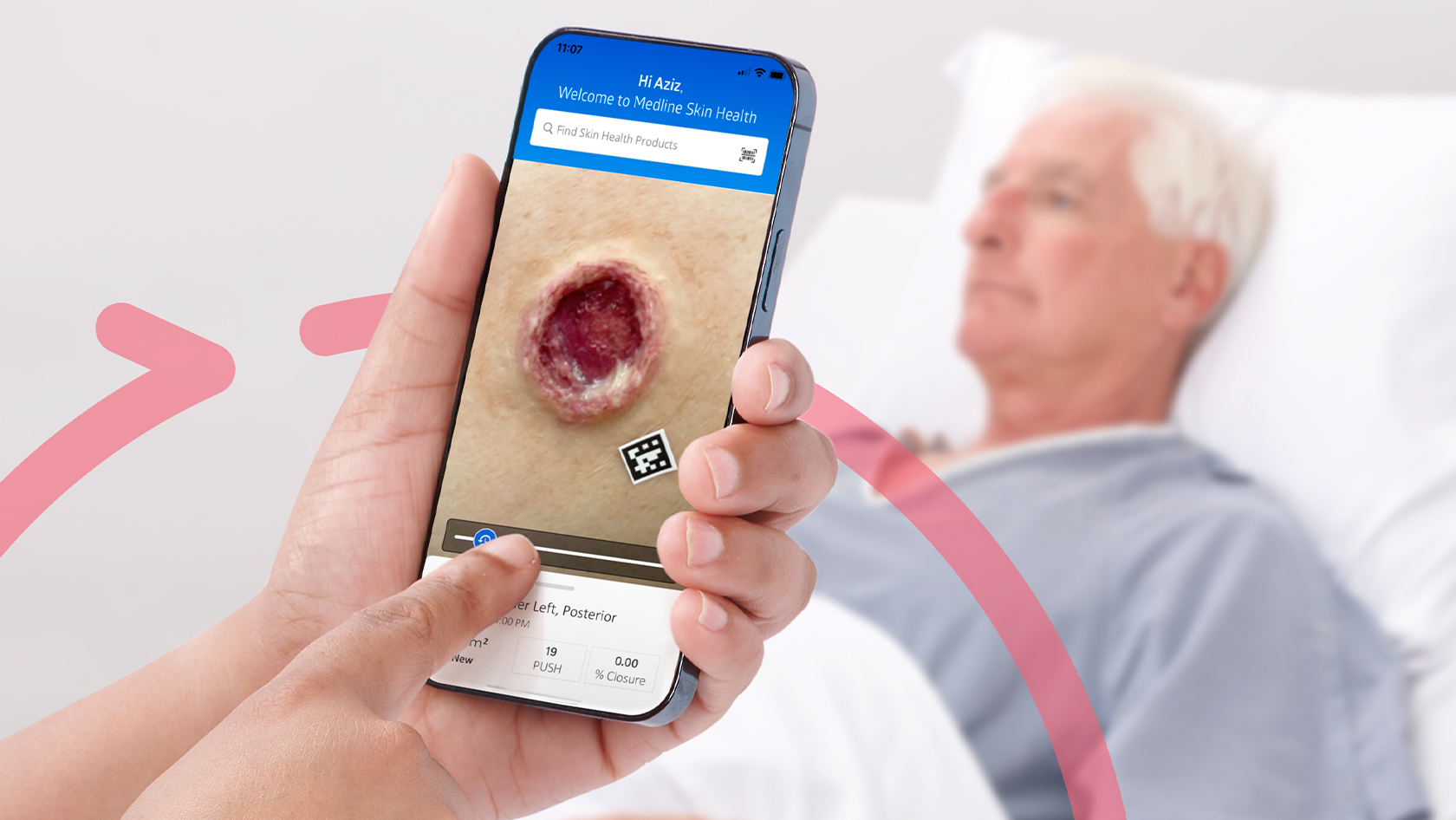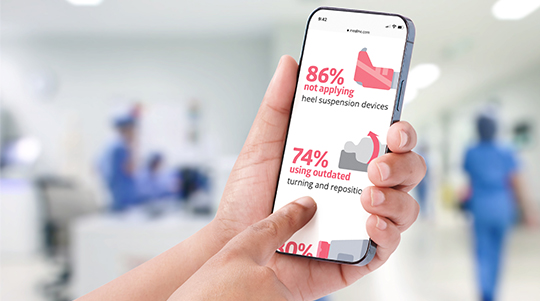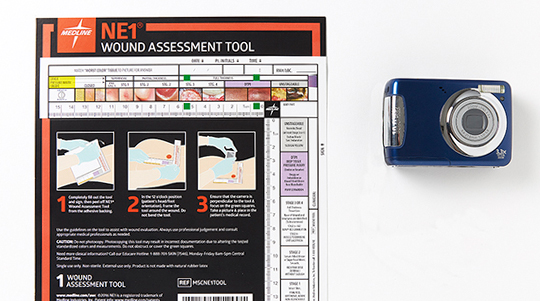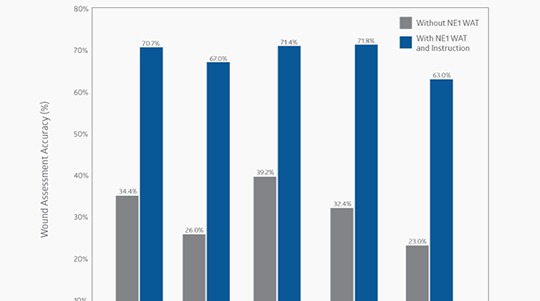Standardize wound assessment with an evidence-based device anyone can use
Boost caregiver confidence and improve outcomes with the NE1 tool.

Effective wound classification starts with accurate wound assessment. That’s why it’s important to empower caregivers with evidence-based tools and resources.
One effective tool available is the NE1 Wound Assessment Tool, created in 2008 by Nancy Estocado, PT, CWS. In this article, we provide a peek into the invention of this popular paper ruler device, why and how it works, and how to implement tools like this to help standardize care.
Designing a wound assessment tool for frontline staff
In 2008, Estocado first sketched out an idea for a new wound assessment tool that would be a step up from a standard paper ruler, but still quick and easy to use. It would reduce guesswork and ultimately improve the healing process. Estocado named it the NE1 as a shorthand for “anyone,” meaning anyone working at the bedside would be able to use it.
While paper rulers can measure a wound, Estocado wanted to help caregivers also classify the wounds. When appropriate, the NE1 tool can also help care for pressure injuries by providing simple written descriptors that guide caregivers to properly stage a pressure injury.
After two years and many iterations later, Estocado’s wound assessment tool was implemented at Sunrise Hospital and Medical Center in Las Vegas where she works. The final version of the tool is an inverted L-shape that includes images of different types of wounds. Nurses match a patient’s wound to a wound type based on the images and descriptions, ultimately leading to better wound classification and care standardization.
Taking the tool digital
The NE1 tool has now become a go-to device in hundreds of hospital systems around the country, and Estocado received an Innovators Award for Quality and Safety for the invention. These days, the universal use of digital wound photography has led to the development of a digital version called the NE1® Wound Management System, which offers further advancements to the NE1 methodology. Caregivers can do even more with the digital version, including:
- Save and share images with wound care coordinators
- Track healing progress over time
- Create customized reports by patient or facility
- Receive treatment recommendations
- Incorporate Braden and Norton risk assessments
- Watch how-to product application videos
- Learn about clinical interventions
Methodology behind the NE1
Behind the NE1 tool is an evidence-based wound assessment methodology called HATT, which stands for History, Anatomy, Tissue Type and Touch/view details. Designed to improve wound care protocols, it also promotes teamwork in wound classification.
Frontline staff are encouraged to participate in all four HATT steps, but focus mostly on the H-history and A-anatomy. You might refer to these as wound etiology and location. Wound care specialists then zero in on the other two areas of HATT: tissue type and other sensory details. Using NE1, they assess worst tissue type and worst color and provide touch or view description.
How to promote new protocols that reduce care variation
Whenever a new methodology or tool is introduced, it’s important to help make it easier for caregivers to incorporate it into their routine. Here are 3 things you can do to help sustain positive changes that standardize skin and wound care:
- Offer ongoing training. From online courses to at-the-bedside guidance, education and training opportunities help build caregiver confidence, which, in turn, can help improve patient and resident outcomes.
- Record and report data. Whenever possible, shine a light on positive results from standardizing wound assessment. You might consider building a Skin Champion team to help delegate responsibilities for tracking, reporting and celebrating the data.
- Take advantage of digital photography. Digital photos serve as real-time and trackable data that ultimately lead to improved reporting and coding. They’re also useful teaching tools for both patients and caregivers.
Proper wound assessment and classification are key to improving outcomes. Be sure to keep up with the latest tools and resources that can help make skin health second nature.
Key takeaway
When Nancy Estocado first came up with the idea for a new wound measurement tool, the goal was to make it easy for anyone to accurately assess wounds. Using the HATT methodology, the NE1 device helps standardize skin and wound care and lead to better outcomes.




